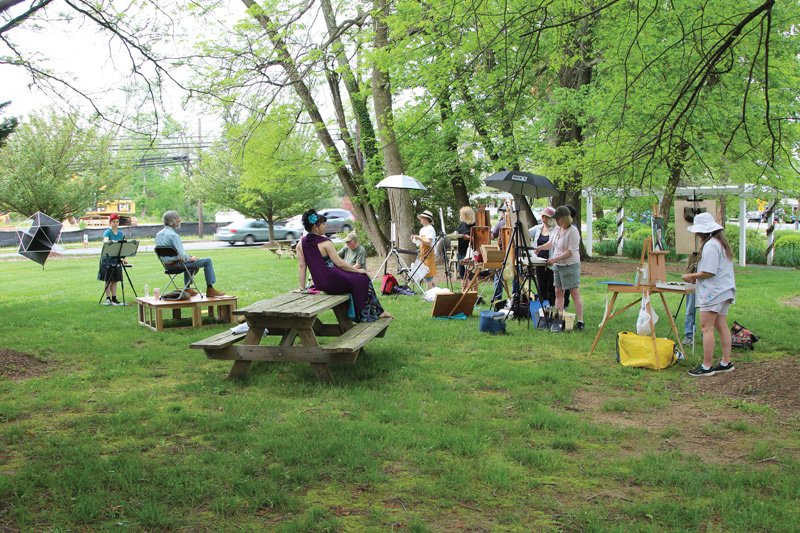+ By Theresa C. Sanchez
From the slight raise of an eyebrow to a playful pout of the mouth, people often speak volumes without saying a word. At any moment, on any given day, the average person engages some of the 43 muscles in the human face in various combinations to display up to 21 expressions. Whether purposeful or subconscious, these forms of nonverbal communication help convey emotion. They are also as essential to creating a successful portrait as the interaction between subject and artist.
Members of the Maryland Society of Portrait Painters (MSPP) claim portraiture to be the most challenging art form to pursue because people demand a certain level of resemblance.

Joanna Barnum, Generations, 15x 22, watercolor, 2017. Created for MSPP’s exhibit “Face-to-Face: The Evolving Story of Sandy Spring”, Sandy Spring Museum: a portrait of two residents of Sandy Spring who volunteered to participate in the collaboration.
“Portrait artists try to go beyond just the likeness in an attempt to capture some unique aspect of a person,” says David Lawton, oil and pastel artist, painting instructor, and MSPP’s president. He says that even if you take a hundred photos of someone, only a few might really capture their personality. He believes the end product should prompt people to exclaim, “Oh yeah, that’s him!”
While there’s no question that the human face is as fascinating as it is ubiquitous, its universal appeal is debatable. Lacking a familiarity with the visage staring back at you or the notoriety of the creator behind it, one might not have reason to linger and look at a portrait. MSPP recognizes that and understands the personal nature of portraiture, and kept it in mind when assembling this past summer’s exhibit at the Willow Gallery in Quiet Waters Park. Unlike previous shows it’s coordinated, the all-members collection of 88 paintings, drawings, and sculptures, by 34 different artists, added landscape and still life pieces to make it accessible to a wider audience.
Broadening the showcase’s scope benefitted the novice MSPP members by giving them an opportunity to step into the spotlight. Lawton—who joined the volunteer-run, nonprofit organization a decade ago and has been its president for the past six years—said he had to convince some of his less-confident colleagues to submit work. “Everyone has talent and ability, it’s just a matter of whether it’s developed or not,” he says. For him, each subject matter builds on another. Landscapes require decisiveness, forcing the painters to react to what they’re seeing in real time. Still life offers more control of the material, lighting, and time. Portraiture combines those skillsets, yet also necessitates drawing expertise. Exhibiting finished artwork is considered the final step in the artistic production process.
“The tradition of portraiture does not survive on its own. The knowledge must be learned, practiced, and then passed on to the next generation,” says award-winning sculptor Rick Casali and MSPP’s vice-president. “To be a portrait artist you must love people and remain constantly curious about the world. It’s always a joy to be around these types.”
The range of proficiency among the MSPP’s current 100 members might vary, but they have one thing in common, and that is documenting all aspects of life, says Andrée Tullier. The painting instructor serves as MSPP’s membership and accreditation chair. Like some of her peers, she also works as a full-time professional artist; other members include part-time artists, retirees, students, and hobbyists. “We’re not just a portrait community, we’re an art community,” says Tullier.
MSPP’s next exhibition will take place at Annapolis City Hall, from October 8 to November 28 and its next annual meeting is slated for November 11 at Anne Arundel Community College. █
For more information,
visit MSPP’s website:
www.mdspp.com



























